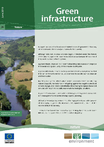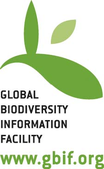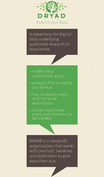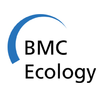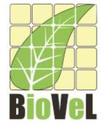The European Commission adopted a new strategy for encouraging the use of green infrastructure, and for ensuring that the enhancement of natural processes becomes a systematic part of spatial planning. Green Infrastructure is a tried and tested tool that uses nature to provide ecological, economic and social benefits. Instead of building flood protection infrastructure, for example, a green infrastructure solution would be to allow a natural wetland to absorb the excess water from heavy rain.
Green infrastructure is often cheaper and more durable than alternatives provided through conventional civil engineering. Biodiversity-rich parks, green spaces and fresh air corridors can for example mitigate the negative effects of summer heat waves. In addition to the health and environmental benefits, green infrastructure also brings multiple social benefits: it creates jobs and makes cities more appealing places to live and work. And it allows for wildlife to thrive, even in an urban context.
Environment Commissioner Janez Potočnik said: "Building green infrastructure is often a good investment for nature, for the economy and for jobs. We should provide society with solutions that work with nature instead of against it, where that makes economic and environmental sense."
More about the EC Green Infrastructure here: http://ec.europa.eu/environment/nature/ecosystems/index_en.htm
The San Francisco Declaration on Research Assessment (DORA) was initiated by the American Society for Cell Biology (ASCB) together with a group of editors and publishers of scholarly journals after a meeting in December 2012 during the ASCB Annual Meeting in San Francisco. The document recognizes the need to improve the ways in which the outputs of scientific research are evaluated.
DORA puts into question the use of Journal Impact Factor as a main tool for assessment, and proposes the consideration of various other factors towards more sophisticated and meaningful approaches. DORA is a worldwide initiative covering all scholarly disciplines.
To read the whole declaration, please follow the link: http://am.ascb.org/dora/

Research in Nature Climate Change uses data on 50,000 common plants and animals to predict worldwide range losses without urgent action to limit emissions
Climate change could dramatically reduce the geographic ranges of thousands of common plant and animal species during this century, according to research using data made freely available online through GBIF.
The information on the current location of common species of plants, mammals, birds, reptiles and amphibians was taken from around 170 million individual data records published freely online through GBIF by some 200 different institutions around the world. The records include museum specimens, data from scientific expeditions and the observations of thousands of volunteer ‘citizen scientists’.
One of the co-authors of the study, Jeff Price of the University of East Anglia’s School of Environmental Sciences, United Kingdom, said: "Without free and open access to massive amounts of data such as those made available online through GBIF, no individual researcher is able to contact every country, every museum, every scientist holding the data and pull it all together. So this research would not be possible without GBIF and its global community of researchers and volunteers who make their data freely available."
The lead author of the study, Dr Rachel Warren, also from UEA’s School of Environmental Sciences and the Tyndall Centre, said: "While there has been much research on the effect of climate change on rare and endangered species, little has been known about how an increase in global temperature will affect more common species."Our research predicts that climate change will greatly reduce the diversity of even very common species found in most parts of the world. This loss of global-scale biodiversity would significantly impoverish the biosphere and the ecosystem services it provides. The good news is that our research provides crucial new evidence of how swift action to reduce CO2 and other greenhouse gases can prevent the biodiversity loss by reducing the amount of global warming to 2 degrees Celsius rather than 4 degrees. This would also buy time – up to four decades - for plants and animals to adapt to the remaining 2 degrees of climate change."
The data repository invites community input on the future of data archiving at upcoming membership meeting
Dryad, a repository for data underlying the international scientific and medical literature, works with a variety of journals, societies and publishers to archive research data at the time of publication. The project began in 2009 and has published more than 3,000 data packages. In 2012, Dryad incorporated as a nonprofit organization with the mission to make scientific and medical research data permanently available to all researchers and educators free-of-charge without barriers to reuse.
For the past four years, Dryad has worked with its stakeholders to develop a sustainability plan to realize this vision. Central to the sustainability plan is a one-time submission fee that will offset the actual costs of preserving data indefinitely. A variety of pricing plans are available for journals and other organizations such societies, funders and libraries to purchase discounted submission fees on behalf of their researchers. For data not covered by a pricing plan, the researcher will be asked to pay upon submission, with waivers provided to researchers from World Bank low and lower-middle income economies. Submission fees will apply to all new submissions starting September 2013. Dryad will also be supported in part by its membership, by grants for research and innovation, and by donors. Membership in Dryad is open to any organization that supports research and education. Dryad is pleased to include Pensoft Publishers among its Charter Members.
The Dryad Membership meeting, to be held in Oxford, UK on Friday, May 24 is open to members, prospective members, researchers and other interested parties. Attendees will hear about recent and upcoming developments in the repository and the nonprofit organization. In addition, there will be an Emerging Issues Forum with presentations from the community about future directions for Dryad, its members, and partner journals, including models for the technical and peer review of data, ideas for promoting the adoption of data citations, measuring data reuse, funder perspectives on the use of research grants for data management costs and the relevance of larger data networks.
Dryad’s Membership Meeting is part of a series of free public events in Oxford spotlighting trends in scholarly communication with an emphasis on research data, including a Symposium on the Now and Future of Data Publication on Wednesday, May 22nd and an ORCID Outreach Meeting with a special joint Dryad-ORCID Symposium on Research Attribution on Thursday, May 23rd. Registration for these events closes on May 13th. Remote attendance will be available for those unable to attend in person.
For more information about submitting data, becoming a member or the sustainability plan, please visit http://datadryad.org. The website also offers an Ideas Forum where people can make their voice heard by suggesting and voting for new features and offering comments.
CONTACT:
Laura Wendell, Executive Director
lwendell@datadrayd.org
+1-919-668-4005 or +1-919-423-3889
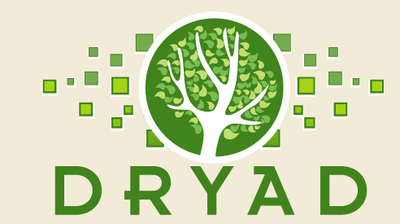
The "Environmental research: Experiences on best practices towards Horizon 2020" conference will be held the 30th of May 2013 in Brussels at the Museum of Natural Sciences. Organizers of the event are the APRE (Agency for the Promotion of European Research), and the ENVIMPACT consortium.
The event will gather European Commission representatives, researchers, FP7 project's participants, governmental, academic and industrial stakeholders of the Central East European countries with the aim of presenting the current and future tools and trends for dissemination and exploitation of R&D results with a special focus on the thematic areas of research in air pollution, chemical pollution and environmental technologies, especially in the Central-Eastern European (CEE) countries.
The agenda of the conference and the press release are downloadable at the link: http://download.apre.it/envimpact_presskit1.zip
The registration is free, please register at http://www.envimpact.eu/index.cfm?action=article&publication_id=922
ENVIMPACT project has been launched on 1st January 2011. This initiative is funded by the European Commission under FP7, DG Research and Innovation, with the objectives to improve the current communication and dissemination of environmental research results deriving from Central-Eastern European (CEE) countries.
November 19-22, 2013 Alexander Technological Educational Institute of Thessaloniki, Greece
Continuing the successful mission of previous MTSR Conferences (MTSR'05, MTSR'07, MTSR'09, MTSR'10, MTSR'11 and MTSR’12), the seventh International Conference on Metadata and Semantics Research (MTSR'13) aims to bring together scholars and practitioners that share a common interest in the interdisciplinary field of metadata, linked data and ontologies. Participants will share novel knowledge and best practice in the implementation of these semantic technologies across diverse types of Information Environments and applications. These include Cultural Informatics; Open Access Repositories & Digital Libraries; E-learning applications; Search Engine Optimisation & Information Retrieval; Research Information Systems and Infrastructures; e-Science and e-Social Science applications; Agriculture, Food and Environment; Bio-Health & Medical Information Systems.
A new article "A decadal view of biodiversity informatics: challenges and priorities" published by BMC Ecology focuses on the challenges and perspectives for biodiversity informatics after a decade of development. The authors Alex Hardisty and Dave Roberts alongside 77 contributions from the biodiversity informatics community share experience and set future directions of biodiversity informatics as a tool for addressing conservation and ecological issues.
Biodiversity informatics plays a central enabling role in the research community's efforts to address scientific conservation and sustainability issues. This community consultation paper positions the role of biodiversity informatics, for the next decade, presenting the actions needed to link the various biodiversity infrastructures invisibly and to facilitate understanding that can support both business and policy-makers. The community considers the goal in biodiversity informatics to be full integration of the biodiversity research community, including citizens’ science, through a commonly-shared, sustainable e-infrastructure across all sub-disciplines that reliably serves science and society alike.
The full text of the article can be accessed here.
The newest newsletter of the BioVel project is now available, offering a range of biodiversity related news, including brief coverage of the EU BON Kick-off and International Symposium Workshop in February, 2013. Among the other stories covered are:
- Letter from Alex Hardisty, Project Coordinator
- Running Workflows Just Got a Whole Lot Simpler
- Friends of BioVeL: Friendships and collaborations are also blooming! (featuring news about: LifeWatch-BioVeL cooperation;; i4Life project; Micro B3 and GENSC are now friends of BioVeL.
The newsletter also contains information about the upcoming workflows and research within the project, as well about events planned for the future.
To read the article and find out more about the news stories covered click here.
One year of experience and perspectives for the future from Pensoft Publishers and GBIF
In 2012 GBIF and Pensoft pioneered a workflow between the GBIF’s Integrated Publishing Toolkit (IPT) and Pensoft’s journals ZooKeys, PhytoKeys, MycoKeys, Nature Conservation, etc. to automatically export metadata into the form of a data paper manuscript, based on the Ecological Metadata Language (EML). One year on they share their experience and perspectives for the future of data publishing.
In its essence, a Data Paper is a scholarly journal publication whose primary purpose is to describe a dataset or a group of datasets, rather than to report a research investigation. As such, it contains facts about data, not hypotheses and arguments in support of the data, as found in a conventional research article. The future of data publishing according to Pensoft Publishers and GBIF, lies in the elaborating of formats for descriptions of various kinds of data (ecological, morphological, genomic, environmental, etc.), as well as in linking to various platforms (GBIF, Scratchpads, Dryad, EDIT, CBOL, etc.).
More about the collaboration and experience of Pensoft Publishers and GBIF learn from their joint poster available here.
The Research Data Alliance (RDA) has been recently launched. Its First Plenary took place between 18-20 March, 2013 in Gothenburg, Sweden. The hot topic of the Plenary was the RDA vision towards open access data without barriers. The 3 days of meetings and working sessions brought the research data community together to contribute and set milestones for the future work of the RDA towards open access data-driven innovation.
Over the last decade, significant investments have been made all over the globe
for developing scientific data infrastructures to support the work of research communities and improving shared access to data. There is a common understanding that solutions must be global and that the development of an integrated and interoperable data domain can only be achieved through increased global cooperation.
As "big data" emerges as an international priority, the Research Data Alliance (RDA) is a newly formed organization whose goal is to accelerate data-driven innovation world-wide through research data sharing and exchange.
At its first Plenary, the RDA was launched by sponsors from the European Commission, the U. S. Government and the Australian Government and leaders in the data community. The Plenary was used as a working meeting to accelerate discussion, Working and Interest Group interaction, and data community development.
ICSU-WDS Data Publication Charter: http://www.icsu-wds.org/working-groups/data-publication
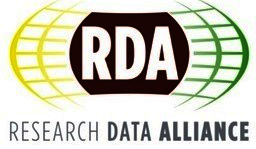
On March 18 2013 the BHL-Europe portal has gone officially live. The Biodiversity heritage library for Europe project began in 2009 and joins noteworthy European museum and botanical gardens, including some in the USA as well. The primary goal of the project was to create an indexed archival system for digitized scientific literature, and free access to this literature via a multifunctional portal (www.bhl-europe.eu).
The portal makes available 6,149 books containing one million pages from 92 content providers at the moment, but this is just the initial offering. New material is added every day, and the growth is projected to increase over time. The BHL-Europe portal (and other international sources) is linked to the Biodiversity Library Exhibition platform, which publishes selected literature in the form of interesting themes, information and an attractive design. Thanks to the specific presentation of literature and interesting scientific items, the platform has significant educational potential.
You can access the BHL-Europe portal here: www.bhl-europe.eu
Read more about the portal on the official BHL blog: http://bhleurope.blogspot.cz/2013/03/bhl-europe-is-finally-officially-live.html
A new "LinkOut" feature introduced by the National Center for Biotechnology Information (NCBI) NCBI’s allows the easy linking to content on PubMed and GenBank. Dryad has already introduced the feature benefitting from easy and fast linking of associated content to the two resources.
PubMed and GenBank, from the National Center for Biotechnology Information (NCBI), are hugely popular resources for searching and retrieving article abstracts and nucleotide sequence data, respectively. PubMed indexes the vast majority of the biomedical literature, and deposition of nucleotide sequences in GenBank or one of the other INSDC databases is a near universal requirement for publication in a scientific journal. LinkOut allows the data from an article to be distributed among repositories without compromising its discoverability.
Dryad, intends to expand on this feature in a couple of ways. First, it is planned to make Dryad content searchable via the PubMed and GenBank identifiers, which because of their wide use will provide a convenient gateway for other biomedical databases to link out to Dryad. Second, open web standards will be used to expose relationships between content in Dryad and other repositories, not just NCBI.
Original source: Dryad news and views
Science for Environment Policy
Earth Observation’s Potential for the EU Environment
http://ec.europa.eu/environment/integration/research/newsalert/pdf/FB6.pdf
Monographs are fundamental for progress in systematic botany. They are the vehicles for circumscribing and naming taxa, determining distributions and ecology, assessing relationships for formal classification, and interpreting long-term and short-term dimensions of the evolutionary process. Despite their importance, fewer monographs are now being prepared by the newer generation of systematic botanists, who are understandably involved principally with DNA data and analysis, especially for answering phylogenetic, biogeographic, and population genetic questions. As monographs provide hypotheses regarding species boundaries and plant relationships, new insights in many plant groups are urgently needed. Increasing pressures on biodiversity, especially in tropical and developing regions of the world, emphasize this point. The results from a workshop (with 21 participants) reaffirm the central role that monographs play in systematic botany. But, rather than advocating abbreviated models for monographic products, we recommend a full presentation of relevant information. Electronic publication offers numerous means of illustration of taxa, habitats, characters, and statistical and phylogenetic analyses, which previously would have been prohibitively costly. Open Access and semantically enhanced linked electronic publications provide instant access to content from anywhere in the world, and at the same time link this content to all underlying data and digital resources used in the work. Resources in support of monography, especially databases and widely and easily accessible digital literature and specimens, are now more powerful than ever before, but interfacing and interoperability of databases are much needed. Priorities for new resources to be developed include an index of type collections and an online global chromosome database. Funding for sabbaticals for monographers to work uninterrupted on major projects is strongly encouraged. We recommend that doctoral students be assigned smaller genera, or natural portions of larger ones (subgenera, sections, etc.), to gain the necessary expertise for producing a monograph, including training in a broad array of data collection (e.g., morphology, anatomy, palynology, cytogenetics, DNA techniques, ecology, biogeography), data analysis (e.g., statistics, phylogenetics, models), and nomenclature. Training programs, supported by institutes, associations, and agencies, provide means for passing on procedures and perspectives of challenging botanical monography to the next generation of young systematists.
Huge data encompassed into a unique georeferenced macrobenthic assemblages database
A new peer-reviewed data paper offers a comprehensive, open-access collection of georeferenced biological information about the Antarctic macrobenthic communities. The term macrobenthic refers to the visible-for-the-eye organisms that live near or on the sea bottom such as echinoderms, sponges, ascidians, crustaceans. The paper will help in coordinating biodiversity research and conservation activities on species living near the ocean bottom of the Antarctic.
The data paper "Antarctic macrobenthic communities: A compilation of circumpolar information", published in the open access journal Nature Conservation, describes data from approximately 90 different expeditions in the region since 1956 that have now been made openly available under a CC-By license. The paper provides unique georeferenced biological basic information for the planning of future coordinated research activities, for example those under the umbrella of the biology program Antarctic Thresholds – Ecosystem Resilience and Adaptation (AnT-ERA) of the Scientific Committee on Antarctic Research (SCAR). The information collected could be also beneficial for current conservation priorities such as the planning of Marine Protected Areas (MPAs) by the Commission for the Conservation of Antarctic Marine Living Resources (CCAMLR).
The expeditions were organised by several famous explorers of the Antarctic. The area covered by the paper consists of almost the entire Southern Ocean, including sites covered by a single ice-shelf. The vast majority of information is from shelf areas around the continent at water depth shallower than 800m. The information from the different sources is then attributed to the classified macrobenthic assemblages. The results are made publicly available via the "Antarctic Biodiversity Facility" (data.biodiversity.aq).
A specific feature of this paper is that the manuscript was automatically generated from the Integrated Publishing Toolkit of the Antarctic Node of the Global Biodiversity Information Facility (AntaBIF IPT) and then submitted to the journal Nature Conservation through a novel workflow developed by GBIF and Pensoft Publishers. (see previous press release). Data are made freely available through the AntaBIF IPT, and sea-bed images of 214 localities through the data repository for geoscience and environmental data, PANGAEA- Data Publisher for Earth and Environmental Science (sample: http://doi.pangaea.de/10.1594/PANGAEA.198682).
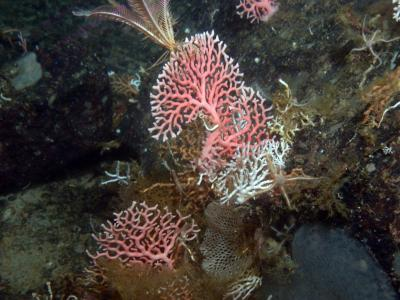 This picture shows the hydrocorals also known as sea fan. (@Julian Gutt, Alfred Wegener Institute)
This picture shows the hydrocorals also known as sea fan. (@Julian Gutt, Alfred Wegener Institute)




 RSS news
RSS news